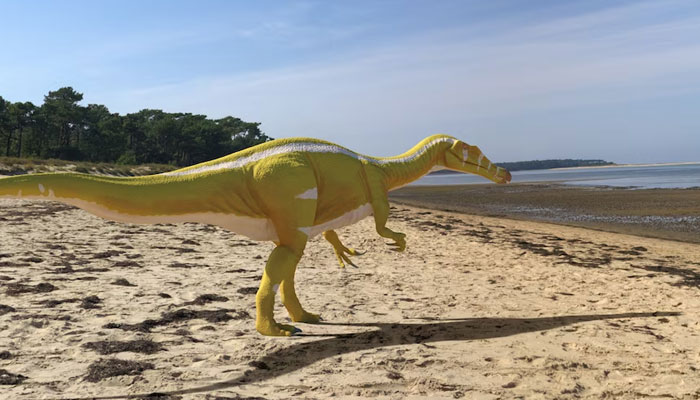Newly discovered dinosaur sheds light on ancient meat-eaters
Spinosaurs are recognised as the largest known carnivorous dinosaurs
May 19, 2023

Scientists in the Spanish province of Castellon have uncovered the partial skeleton of a previously unknown dinosaur species.
The discovery sheds light on the characteristics of spinosaurs, a highly successful group of carnivorous dinosaurs that inhabited both land and water. This particular dinosaur, named Protathlitis cinctorrensis, lived approximately 126-127 million years ago and measured around 10-11 meters in length, weighing about 2 tonnes.
Spinosaurs are recognised as the largest known carnivorous dinosaurs.
Belonging to a larger group called theropods, which encompasses all meat-eating dinosaurs, spinosaurs were accompanied by notable species such as the tyrannosaurus genus from North America and the giganotosaurus genus from South America, as well as carnivorous birds. The Protathlitis specimen was described based on a partial skeleton, including the right upper jawbone, one tooth, and five vertebrae.
Other dinosaur fossils found in the same location include a large, long-necked quadrupedal plant-eater, two smaller bipedal plant-eaters, and another theropod that was smaller than Protathlitis.
The newly discovered dinosaur shares a close relationship with baryonyx, another spinosaur unearthed in England during the 1980s. Both species possess elongated skulls compared to other meat-eating dinosaurs. However, while baryonyx had a large claw on its first finger, no limb remains of Protathlitis were found.
Protathlitis inhabited a coastal region along the Tethys Sea, an ancient ocean that includes the present-day Mediterranean Sea.
Unlike some spinosaurs believed to have been semi-aquatic and primarily fish hunters, Protathlitis had a different hunting strategy. The species roamed the coastal region, indicating a different ecological niche. Spinosaurs were widespread during the Cretaceous Period, existing in Europe, Africa, Asia, and South America. Due to the scarcity of their fossils, scientists are still unraveling their early history and global dispersion.
The recent discovery supports the idea that two lineages of spinosaurs, those closely related to baryonyx and those related to spinosaurus, occupied western Europe during the early Cretaceous Period before migrating to Africa and Asia, where they experienced further diversification.
The dominance of baryonyx relatives in Europe and the prevalence of spinosaurus relatives in Africa are notable findings. These insights contribute to our understanding of the evolution and distribution of spinosaurs during the age of dinosaurs.









